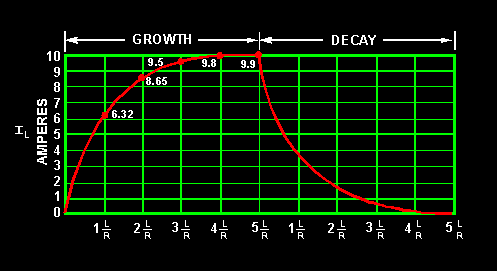

Originally Posted by
HankMcSpank

Toying with the idea of an inductor in series with the led (or possibly bringing a cap into play), just to delay the sharp switch on.
A cap in parallel with the LED won't work as the current will rush in to the cap trying to charge it, making matters worse. Now, a resistor in series with an inductor would do just fine. Keep in mind the time constant L/R. One L/R time constant is the time required for the current in an inductor to increase to 63.2 percent of the maximum current. This is similar to the RC time constant in a capacitor+resistor circuit.
By playing with the R and L values, you can adjust the delay that you want for the incomming current. I found this very nice picture on the web that ilustrates this point.

http://www.tpub.com/neets/book2/2d.htm
Robert
"No one is completely worthless. They can always serve as a bad example."
Anonymous








Bookmarks